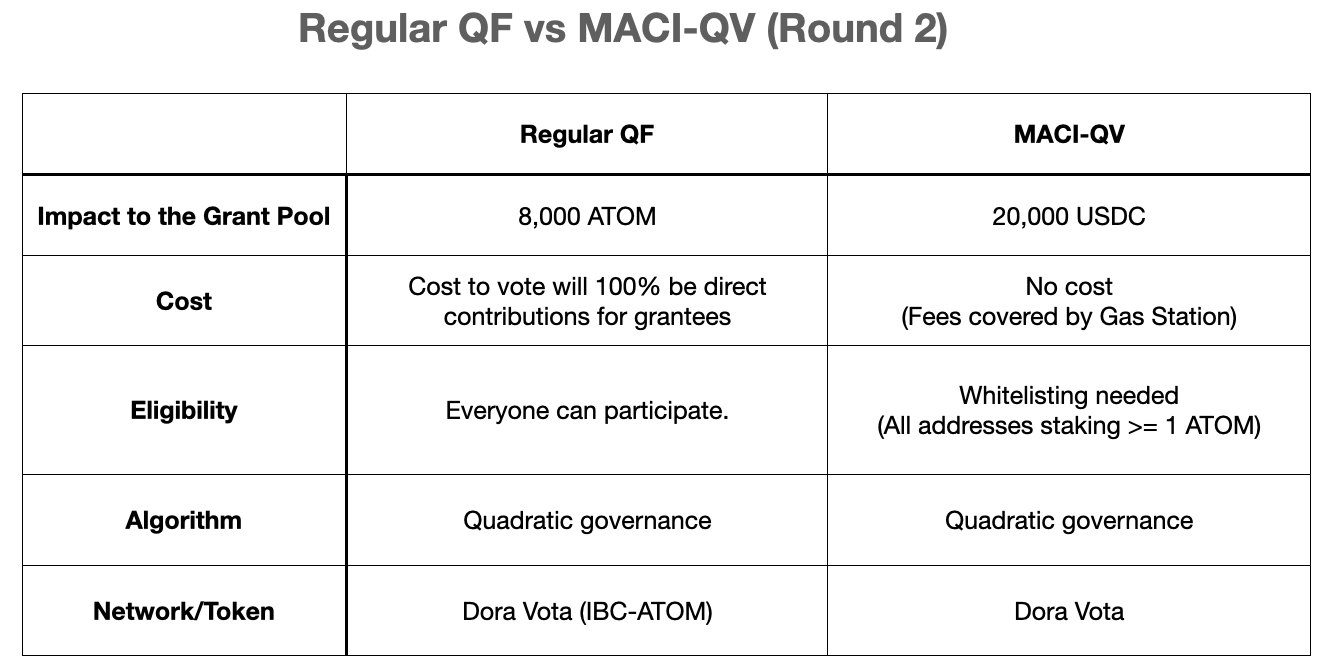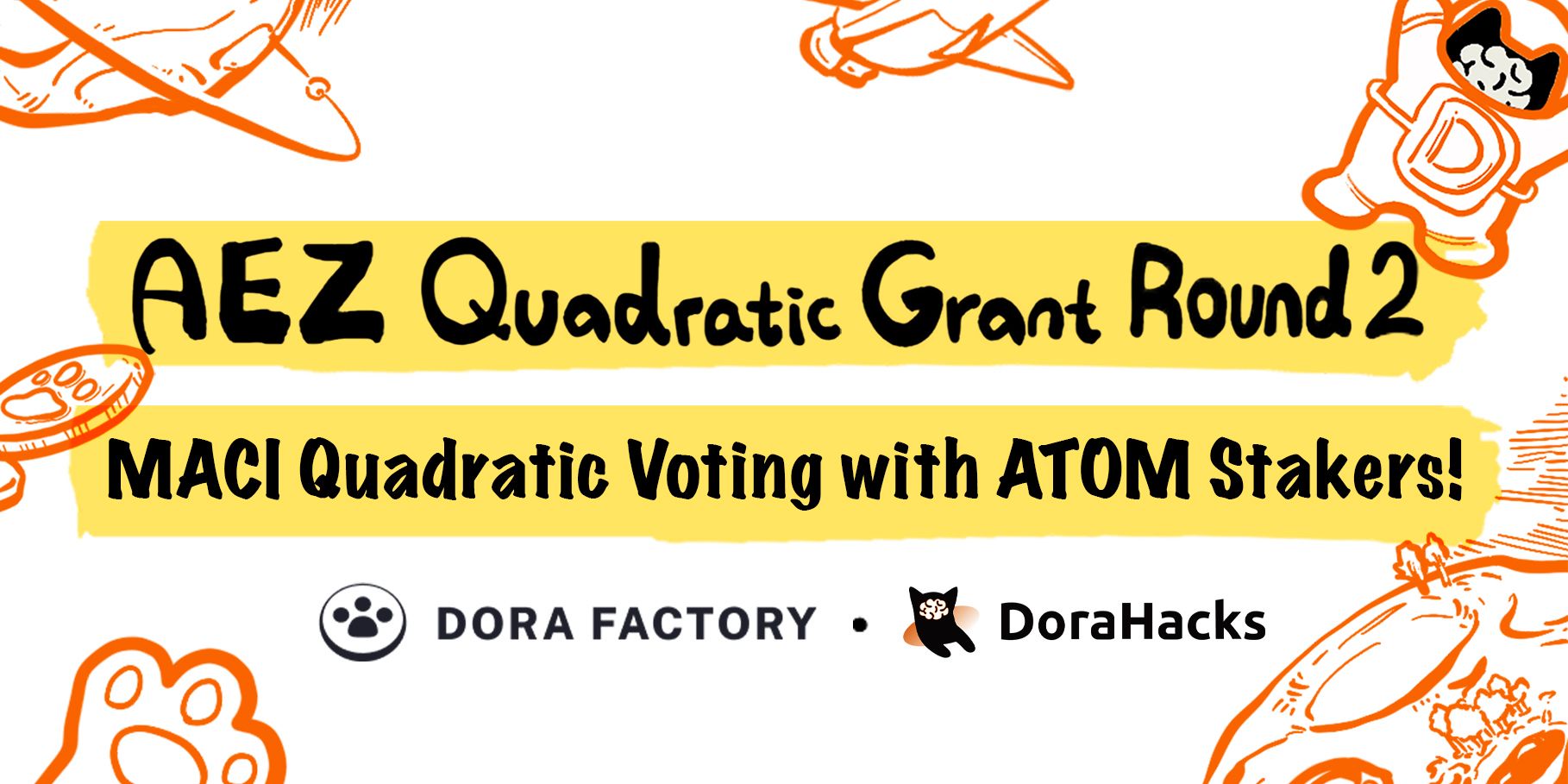Quick Recap
June 22nd marked the successful completion of the AEZ Quadratic Grant’s first MACI quadratic round. All $ATOM stakers(1.05 million addresses), granted voting power based on a snapshot taken on June 5th, voted for their favourite AEZ public goods among the 16 grantee projects. 2262 voters generated 18,702 MACI messages, ultimately deciding the distribution of $20,000 from the Round 2 grant funding pool.
This round wasn't just about funding; it marked the first-ever adoption of MACI on-chain voting within the AEZ ecosystem. It represented the largest-ever implementation of MACI in Web3 history, establishing a new milestone in decentralized governance within AEZ.

So, what is MACI, and why is it important?
The idea of adopting MACI followed the approval of Cosmos Proposal #917, which was set to allocate nearly $1 million in funds to support public goods and appchain builders in the ATOM Economic Zone. Preventing collusion was essential to distribute these funds fairly. Hence, in AEZ Quadratic Grant Round 2, Dora team introduced MACI quadratic voting to the ATOM community for the first time.
MACI, short for Minimum Anti-Collusion Infrastructure, is designed to enhance on-chain governance by minimizing collusion and maximizing voter privacy through the power of zk-SNARK. In a MACI-powered on-chain voting round, votes are cast anonymously, ensuring that only the final results are displayed, not individual voting details. Unlike traditional transparent voting systems based on blockchain broadcasts, this approach prevents the blockchain from providing public proof of voting, effectively mitigating collusion attempts.

In AEZ Quadratic Grant Round 2, every address staking ATOM with a validator was granted voting power, or "voice credits," proportional to their staked amount. A quadratic voting mechanism ensured that larger stakeholders didn't have disproportionate influence, fostering a more balanced distribution of funding. That means, if one wanted to vote for a certain grantee, 2 votes cost 4 voice credits, and N votes cost N*N voice credits. The quadratic mechanism restricted the influence of whale stakers, preventing them from disproportionately affecting funding distribution.
Difference Between Regular QF and MACI-QV
In regular Quadratic Funding (QF), voters use specific tokens (e.g., ATOM) to cast votes and directly contribute to grantees. The contribution portal for active grantees is always open. How to contribute>>
In AEZ Quadratic Grant Round 2, $20,000 of the grant funding pool(8000 ATOM+20,000 USDC) will be distributed based on MACI voting results. The remaining 8,000 will be decided by the regular QF results at https://dorahacks.io/aez.

Continue the Hype with AEZ Quadratic Grant
As we all know, public goods typically are not fully venture-funded and usually do not have any discernible business model or a good way to commercialize, so decentralized community funding can be crucial for their survival. Therefore, Dora team initiated the AEZ Quadratic Grant at the beginning of 2024 as a dedicated program to supporting AEZ public goods and appchain projects.
Thanks to the generous support from the Cosmos Hub community(through Proposal #917) and AADAO(Atom Accelerator), the program is equipped to fuel innovation through ten rounds of quadratic funding grants. Following the approval of Cosmos Proposal #917, 80,000 ATOM has been secured from the Cosmos Hub to support this program. This funding will support 10 successive rounds of quadratic funding and MACI voting grants at the AEZ Quadratic Grant in 24 months. Additionally, with robust backing from AADAO(Atom Accelerator), an extra $200,000 have also been committed to the prize pool, distributing $20,000 for each round to empower the public good builders further.
With its continuous funding model and open application process, the grant program ensures that promising projects receive the support they need to thrive. The entry to be a grantee is always open for public application. When a grantee is inactive for a certain timeframe, or when they have closed a major fundraising round, they will be archived and suspended to receive new contributions or matching funds.
Without public good builders, AEZ cannot keep its robustness and sustainability. As the AEZ Quadratic Grant continues to evolve with grantees, its commitment to fairness, transparency, and community-driven funding will remain paramount for Dora team to keep building the underlying dGov infrastructure.
Ready to be a part of the AEZ future? Learn more about the AEZ Quadratic Grant and explore opportunities to contribute to the next generation of public goods in the Cosmos ecosystem. AEZ Quadratic Grant
